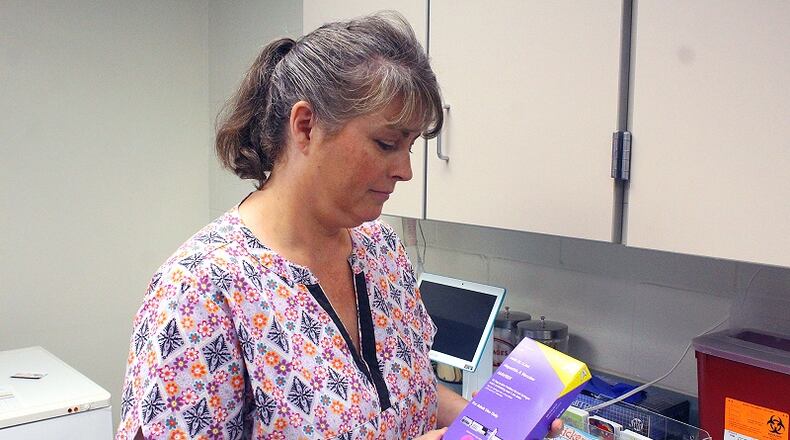There have been 461 Ohio cases recorded for the same time period. For 2012 to 2016, the median number of hepatitis A cases recorded in Ohio was 38 cases.
| Hepatitis A | |
|---|---|
| There have been 461 Ohio cases from Jan. 1 to Sept. 24. | |
| County | Cases |
| Butler | 62 |
| Champaign | 0 |
| Clark | 4 |
| Darke | 2 |
| Greene | 5 |
| Miami | 5 |
| Montgomery | 81 |
| Preble | 5 |
| Warren | 3 |
| Ohio | 461 |
| Source: Ohio Department of Health |
MORE: CPAs, real estate agents and more now required to report elder abuse
Dan Suffoletto, spokesman for Public Health - Dayton & Montgomery County, said health officials don’t know why this year cases are particularly high other than to look to the ways the virus is spread and the groups that are at highest risk of infection.
“Groups historically more impacted are people who experience homelessness, people who are in jail, people who use street drugs, men who have sex with men and people who travel to areas where hepatitis A is prevalent,” Suffoletto said.
On Aug. 31, the Butler County Sheriff’s Office reported two inmates were diagnosed with hepatitis A and vaccines were administered to staff and inmates as a precaution.
Hepatitis A is a vaccine-preventable liver disease that usually spreads when a person ingests fecal matter—even in microscopic amounts—from contact with objects, food, or drinks contaminated by the stool of an infected person. Hepatitis A also can spread from close personal contact with an infected person, such as through sex.
Good hygiene reduces the spread of the virus.
“We need to make sure people are washing their hands thoroughly and completely,” Suffoletto said.
The Ohio Department of Health reported in the spring that cases were rising and in June declared a statewide outbreak.
With about 6 out of 10 of the hepatitis A cases, the person has been hospitalized, reported Ohio Department of Health. Hepatitis A does not become chronic.
MORE: Anthem returning to ACA exchange in Ohio in 2019
Neighboring states such as Indiana, Kentucky and Michigan have all been affected by a hepatitis A outbreak.
Suffoletto said health officials are holding vaccination clinics at homeless shelters and jails to reach higher risk people.
The vaccine is a two-dose vaccine but even if the second dose can’t be assured, like with a homeless patient, the CDC says a single dose is still worthwhile and has been shown to last for at least 10 years.
The virus is vaccine preventable and Centers for Disease Control and Prevention recommends the hepatitis A vaccine for all children at age 1 and for at-risk individuals.
Health care providers, retail pharmacies and clinics, and local health departments can provide vaccinations.
People who know that they have been exposed to someone with hepatitis A should contact their health care provider or local health department to discuss post-exposure vaccination options.
People with symptoms of hepatitis A should also contact their health care provider. Symptoms of hepatitis A include fatigue, low appetite, stomach pain, nausea, clay-colored stools and jaundice. People with hepatitis A can experience mild illness lasting a few weeks to a severe illness lasting several months.
Ohio Department of Health has provided more than 5,000 doses of hepatitis A vaccine to local health departments. By declaring a hepatitis A outbreak, the state department said it ensured access to additional hepatitis A vaccine through the CDC.
About the Author
